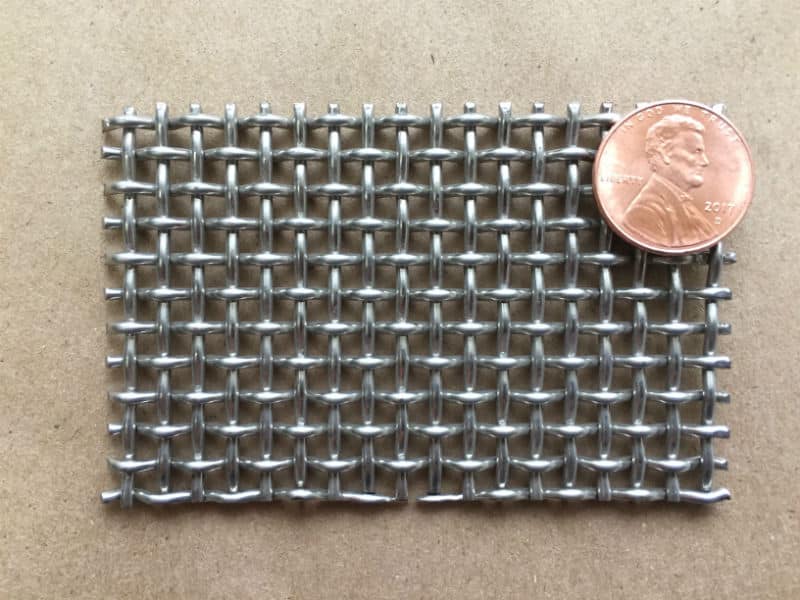The Differences Between 304 and 316 Stainless Steel
All stainless steel is not made the same. Stainless steel is graded. The “grade” of stainless steel refers to its quality, durability, and temperature resistance. Deciphering what stainless steel you need is an important step in your next project involving stainless steel mesh. Type 304 and Type 316 stainless steel metal mesh are two of the most common types used but knowing the difference between the two is important.

6×6 Mesh .063″ Wire .104″ Opening 38.9% OA
304 Stainless Steel
Known as A2 stainless, 304 stainless steel is the most common of the stainless steel family. The most common form of 304 stainless steel is 18-8 or 18/8 stainless steel which contains 18 percent chromium and 8 percent nickel.
304 stainless steel mesh can withstand corrosion from most oxidizing acids. That durability makes this grade of stainless steel easy to sanitize, an ideal advantage for kitchen and food applications. 304 stainless steel is also common in buildings, decor, and site furnishings.
304 stainless steel is austenitic, meaning it is a solid solution of carbon in a nonmagnetic form of iron. This means this grade of metal mesh is non-magnetic and exhibits poor thermal and electrical conductivity. While it boasts excellent malleability and can be formed into required shapes, it also carries increased corrosion resistance when compared to regular steel. 304 is susceptible to corrosion from chloride solutions, or from saline environments like the coast.
316 Stainless Steel
316 stainless steel, also known as marine grade stainless or A4 stainless, is well-known for its increased resistance to corrosion and its superb abilities in salt-water and marine applications. While it comes with the same physical properties as 304 as well as similar utilitarian functions, the big difference is the incorporation of molybdenum, generally ranging from 2-3% by composition (although some specialty 300-series stainless steels can contain up to 7-8% molybdenum).
The increased nickel content and the inclusion of molybdenum make 316 stainless steel metal mesh a bit costlier than grade 304 but offer increased corrosion resistance compared to 304—particularly against chlorides and chlorinated solutions. 316 stainless steel is generally used whenever chemical processes and high-salinity environments warrant chloride-resistant features and due to its non-reactive traits, is also widely used in the manufacture of medical & surgical equipment.
Knowing the Difference between 304 and 316 Stainless Steel for Your Purchasing Decision
Austenitic stainless steels are known for their versatility. Lawrence Sintered Metals carries a full assortment of metal meshes in 304 and 316 stainless steel, as well as other grades. The benefits of stainless steel also come with age and proper care as low-maintenance requirements and long service life ensure that architectural and mechanical integrity will be non-issues for years to come.
If you’re planning on using stainless steel in saltwater environments, 316 is the proper alloy. If you’re looking for a durable alloy and superior corrosion resistance isn’t necessary, 304 stainless can work perfectly. To learn more about what each stainless steel can do for you and find the perfect fit for your application, please reach out to us. We will be happy to assist in determining whether 304 or 316 stainless steel is a suitable choice for your metal mesh project.
